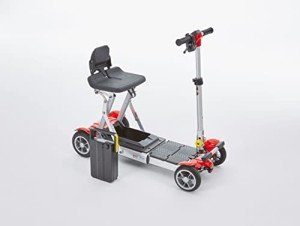How To Determine If You're Prepared For Mobility Devices

Understanding Mobility Devices: Enhancing Independence and Quality of Life
In today's hectic world, the desire for mobility is universal. However, certain medical conditions or age-related challenges can hinder movement, leading to a continuous look for help. Mobility devices work as necessary tools to boost independence, improve quality of life, and make it possible for people to engage fully in their communities. This post provides a comprehensive overview of mobility devices, including their types, functions, selection criteria, and more.
Types of Mobility Devices
Mobility devices vary from basic aids to complex devices, tailored to satisfy numerous needs. Below is a table summarizing typical kinds of mobility devices:
| Type of Device | Description | Suitable For |
|---|---|---|
| Walkers | Four-legged support devices that supply superior stability while strolling. | Individuals requiring extra support. |
| Walking sticks | Single or three-legged sticks that improve balance and support walking. | Those with slight mobility difficulties. |
| Wheelchairs | Seats mounted on wheels, readily available in handbook and electric versions. | People with minimal or no mobility. |
| Scooters | Electric cars designed for outside use and ease of navigation. | Those who can't stroll fars away. |
| Crutches | Devices that assist individuals transfer weight away from a hurt leg. | People recuperating from leg injuries. |
| Rollators | Walkers with wheels, seats, and brakes for boosted mobility. | Users needing rest choices while strolling. |
| Lift Chairs | Reclining chairs that assist users in standing up and taking a seat. | Seniors or those with mobility constraints. |
| Mobility Scooters | Small electric automobiles for limited mobility, typically utilized outdoors. | Individuals needing assistance over cross countries. |
Key Features of Mobility Devices
When choosing a mobility device, numerous key functions should be thought about to guarantee optimum functionality and ease of use:
- Weight Capacity: Understanding the gadget's weight constraint is vital for security and effectiveness.
- Adjustability: Devices ought to be adjustable in height and width to fit the user comfortably.
- Portability: Lightweight and foldable choices are necessary for users who travel or need transport.
- Stability and Safety: Look for features like anti-tip wheels and tough structures to improve safety.
- Relieve of Use: Simple mechanisms and easy to use styles can make a significant distinction in everyday use.
- Convenience: Ergonomic designs and cushioned seats can boost the user experience.
Selecting the Right Mobility Device
Selecting the right mobility gadget can be an overwhelming job. Here are some steps to guide the decision-making process:
- Assess Needs: Evaluate the person's mobility challenges and day-to-day activities.
- Speak with a Professional: Engage health care specialists who can supply suggestions based on the individual's physical condition.
- Trial Options: If possible, trial various devices to determine comfort and functionality.
- Review Budget: Consider the expense of the gadget, including any additional functions or modifications needed.
- Research study Options: Determine the very best brand names and models by reading reviews and comparisons.
Table: Comparative Analysis of Popular Mobility Devices
| Gadget | Advantages | Disadvantages |
|---|---|---|
| Walkers | Exceptional stability, promotes strolling. | Bulky, might limit movement in small areas. |
| Walking canes | Lightweight, improves balance. | May not supply adequate support for severe mobility problems. |
| Wheelchairs | Suitable for those with substantial mobility restrictions. | Can be troublesome, particularly in indoor environments. |
| Scooters | Great for outdoor usage, simple to maneuver. | Minimal indoor functionality, much heavier. |
| Rollators | Offers rest alternative, simple to move. | May need more area than standard walkers. |
| Raise Chairs | Comfortable, assists transition from sitting to standing. | More costly, bigger footprint. |
Often Asked Questions (FAQs)
1. What is folding mobility scooter reviews ?
A mobility device is any tool designed to assist individuals in moving and navigating their environment. This includes walkers, wheelchairs, scooters, and crutches.
2. How do I know which mobility device is best for me?
Consider your specific mobility obstacles, physical capabilities, and way of life needs. Consulting with health care specialists can also offer customized recommendations.
3. Are mobility devices covered by insurance coverage?
Lots of insurance strategies, including Medicare, may cover particular mobility devices. It's essential to consult your insurance service provider for particular coverage information.
4. Can I lease a mobility gadget instead of buying one?
Yes, lots of medical supply stores and drug stores use leasings for mobility devices. This choice is helpful for individuals with short-lived mobility problems.
5. How can I keep my mobility device?
Regular maintenance is important. It consists of cleaning up the device, looking for wear and tear, and ensuring all parts are functioning correctly.
The Impact of Mobility Devices on Quality of Life
Mobility devices substantially enhance the lifestyle for people with minimal mobility. They cultivate self-reliance, encourage social interaction, and enhance access to necessary services and leisure activities.
- Increased Independence: Users can navigate their neighborhoods, participate in events, and take part in pastimes without counting on others.
- Social Engagement: Mobility devices facilitate participation in celebrations, therefore combating sensations of isolation.
- Boosted Safety: Devices offer stability and decrease the threat of falls, promoting user confidence.
Mobility devices are more than simply tools for movement; they are entrances to independence and quality living. By understanding the different types of mobility aids offered, their key functions, and factors to consider for picking the right gadget, individuals can make informed decisions about their mobility needs. Eventually, the right mobility gadget can lead to a more active, satisfying life. Whether it's a walker, wheelchair, or scooter, the right choice contributes substantially to improving the mobility and independence of users.

